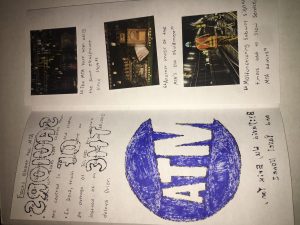Pavel Nunez
5/11/19
Dr Carrie Hall
English 1121
Unit 3(Redo)
As you may know, over the past years there has been a lot of deaths in MTA, but suprisingly over half of them were considered suicides instead of accidental deaths.Suicide by subway is the leading cause of deaths in the MTA —looking at the chart in the next page you can see that mostly half of the deaths over the years were suicides 51 percent of all fatalities, an analysis of three years of MTA data shows.And with 57 percent of all rail deaths in 2013 — 16 of 28 — to suicide.From 2010 to 2012 there were a total of 153 deaths by subway trains — and 78 were believed to be suicides, according to data obtained by ”The Post through a Freedom of Information Act request. In 2010, almost 69 percent of all subway deaths were suicides, or 35 out of 51 total fatalities”. Not only does subway death happens, but also they cause a lot of train related issues, Suicides by train have devastating consequences for the victims families, the train company(the MTA to be exact) because examining a dead body and investigating the area leads to train delays which makes people very unhappy, and MTA will receive , staff dealing with the aftermath of such incidents(like calling the police to investigate and see the dead body, then dispose of it, Off topic here but, the MTA has gotten into a controversy where they temporarily put away the dead bodies and dismembered body parts of people killed in subway accidents inside employee break rooms until emergency responders arrive, Which is sorda gross and unsanitary for the workers that spend a while working and then coming to relax only to see a dead body in front of you. You can read more about it here in the end.
Sources:
Donaghey. “The MTA Allegedly Stashes Dead Bodies in Employee Break Rooms.” Vice, VICE, 14 Aug. 2017, www.vice.com/en_us/article/8xxn3g/the-mta-allegedly-stashes-dead-corpses-in-employee-break-rooms-vgtrn.
Buiso, Gary. “Suicide Is Leading Cause of Subway-Passenger Deaths: MTA Data.” New York Post, New York Post, 27 Aug. 2013, nypost.com/2013/06/02/suicide-is-leading-cause-of-subway-passenger-deaths-mta-data/.








